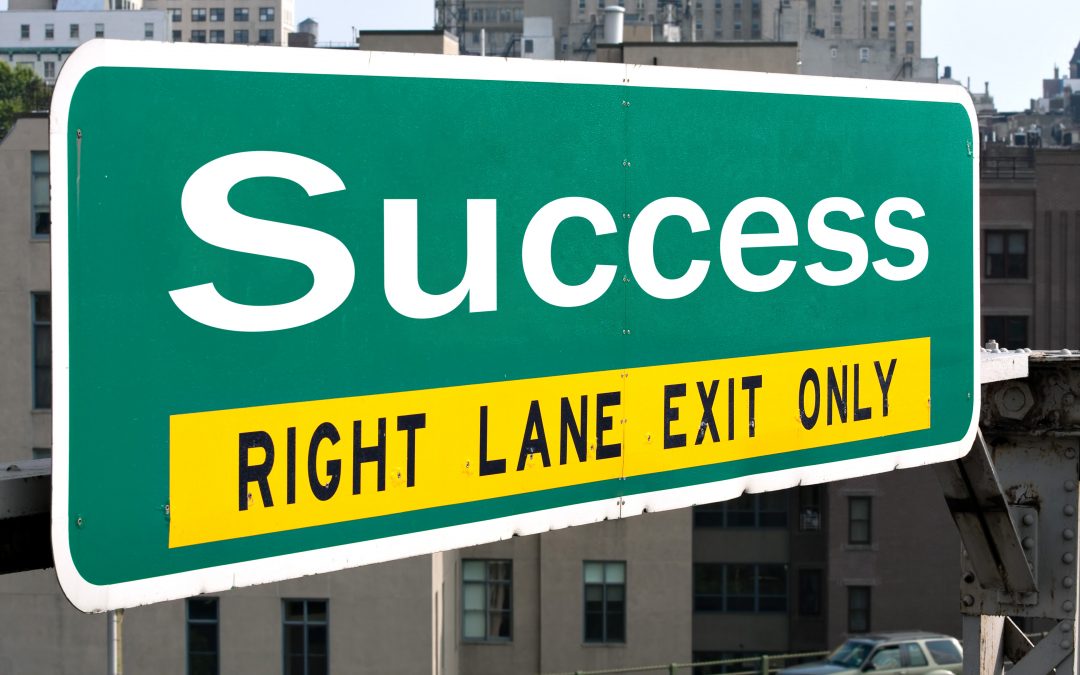
by Kim Loomis | Aug 31, 2019 | Blended Learning, evaluation, Personalized Learning
I often get asked about the effectiveness of blended learning. Educators, from classroom teachers and building administrators, to district curriculum directors and superintendents want to know, “Does blended learning work?” What they are really asking is, “Can I be confident that adopting blended classrooms and/or digital curriculum will improve student learning?” I don’t blame them. Budgets are tight. Time is precious (including addressing professional learning needs). Yet, no one would ever ask, “Is learning in a K-12 environment actually effective?” However, in today’s highly technological world, digital learning is a life skill that schools must adopt. So, the better questions are, “What can we do to teach effectively in a blended learning environment?” and “How do we know it’s working?” The answers will be subject to the interplay of media, method, and modality (great video!). When seeking a return on investment (ROI) for blended learning, one must first have a vision for what blended classrooms should look, act, and feel like. Like the multifaceted education system and the numerous teaching strategies deployed in countless classrooms across the nation, the answer lies in this very same systems complexity and variability in performance. The Carnegie Foundation reminds us that it takes a multi-layered approach of using improvement science to accelerate learning and address problems of practice. When seeking an answer to ““How do we know blended learning is working,” consider breaking the measures of evaluating blended learning effectiveness into four different data sources, which I like to call the 4Ps: Performance (outcome measure) – Are student outcomes improving (and for whom)? Student achievement data.Pedagogy – (process measure) Is classroom instruction changing...

by Kim Loomis | Jul 10, 2019 | Blended Learning, Digital Learning Models, Online Learning
Clay Christensen writes of the Theory of Jobs to Be Done, “When we buy a product, we essentially ‘hire’ something to get a job done… People don’t simply buy products or services, they ‘hire’ them to make progress in specific circumstances.” Understanding the “job” for which one is hiring for will benefit the client in selecting the right product and service in need and maximize its fullest potential. When developing a digital learning program, it’s key to align our true priorities with the proper product and service. Just as important, is to ensure appropriate staff professional development when changing classroom pedagogy. Using online content and tools has become a regular appearance in the nation’s K-12 classrooms. Many different deployment methods have been utilized – often lumped into a single category of ‘digital learning.’ However, in the landscape of the classroom, when technologies are brought into the fold, not all programs are created equal. Especially in the eyes of the ever watchful National Collegiate Athletic Association (NCAA), who is concerned when schools develop non-traditional learning programs. Thus it is important to note the various types and degrees of digital learning environments that are being offered to students. The table below attempts to describe the various digital learning deployment programs, in degrees from non-traditional fully online learning, to the traditional classroom’s utilization of digital content (e.g. content area instruction) and tools (e.g. productivity software and apps) to enhance student success and engagement. What is your digital learning vision? What deployment program best describes the ‘job to be done?’ Knowing the answers to these questions will help you seek the best products...

by Kim Loomis | Aug 27, 2018 | Blended Learning, Digital Learning Models, Program Design
It’s that time of year again, when students are excited to meet their new teachers and staff are busy preparing classrooms. It’s important to kick the school year off on the right foot. One that can lead to excitement, innovation, and higher student gains. As the saying goes, “We can’t keep doing the same thing, and expect different results.” It’s time to consider partnering with digital content. When teachers utilize digital curriculum, it is like having an aide in the classroom – one for each and every student. In the CIA of blended learning model, teachers partner with digital curriculum to help deliver Depth of Knowledge one and two (DoK 1-2). This frees time in the day for the teacher to work differently. They no longer have to provide all content. Classroom teachers need to partner with the digital curriculum and allow it to do what it is best at – creating an individualized learning space for each student. Again, the technology is good only at a low level of understanding, DoK 1-2. Releasing control to another is a big ask, I know. Think about other partnerships you have in your life. Take your spouse or kids for instance. They may not put the dishes in the dishwasher the way you would, but it gets done. They may not fold the clothes the way you might, but again it gets done. Teachers may find that the digital curriculum does not instruct the way they would have, but it will get done. And just like you may walk behind your spouse or kids and rearrange the dishes, or...

by Kim Loomis | May 26, 2018 | Blended Learning, Personalized Learning, Program Design, Research
The value of a word, not it’s definition, but the word itself can make a difference. Take personalized learning. This is a word that is thrown into every educational conversation, yet does it have a single meaning, or is the definition determined by the individual who hears or uses it. Think for a moment of how you would define personalized learning. What characteristics and elements are essential? Does digital devices, or digital content rise to the top? In 2014, Education Week published a working definition of personalized learning, developed by some of the most respected minds in the field such as the Bill & Melinda Gates Foundation, the Christensen Institute, iNACOL, the Learning Accelerator, the Michael & Susan Dell Foundation, and many others. The four-part “working definition” included: Competency-based Progression: Each student’s progress toward clearly-defined goals is continually assessed. A student advances and earns credit as soon as s/he demonstrated mastery. Flexible Learning Environments: Student needs drive the design of the learning environment. All operational elements – staffing plans, space utilization, and time allocation – respond and adapt to support students in achieving their goals. Personal Learning Paths: All students are held to clear, high expectation, but each student follows a customized path that responds and adapts based on their individual learning progress, motivations, and goals. Learner Profiles: Each student has an up-to-date record of his/her individual strengths, needs, motivation, and goals. Imagine doing all of this without technology. Sure, personalized learning can take place absent from digital learning, but it would be difficult, and why would you not take advantage of the tools of today – like devices and...

by Kim Loomis | Mar 12, 2018 | Blended Learning, Professional Development, Program Design
We first introduced the CIA of Blended Learning: digital Curriculum, guided Instruction, and authentic Assessment for a blended learning environment with these unique qualifiers. The more we present this concept to teachers, schools, and administrators it has grown and expanded to show the entwined relationship of the three elements. To help educators see the interconnected CIA relationships [Technology – Teacher – Student], we have an easy one-third balanced blended framework. Understanding the one-third relationship of the three elements shifts the teacher’s mindset towards partnering with digital content and releasing learning to students in active engagement settings. Check out the reference document of the One-third Balance of Blended Personalized Learning. We challenge educators to rethink their role as a facilitator who is intentionally “off the stage” two-thirds of the time. We like to call this two-thirds time ‘teaching by walking around,’ which leads to stronger teacher-student relationships. This one-third balance isn’t just a framework—it’s a mindset shift that empowers students, leverages technology, and fosters deeper learning. Blended Learning Defined First, let’s revisit the definition of blended learning, in its simplest of terms: Adding the wisdom of teachers, with the intelligence of technology to create a personalized learning environment for every student. Understanding the relationship of these three elements helps to create a balanced blended classroom. The three icons above; technology, teacher, and students, create the one-third framework. Digital Curriculum: One-Third Technology In a blended classroom, teachers need to partner with software and the intelligence of technology, which can provide individual data points, to deliver Depth of Knowledge (DOK) levels 1-2: recall and skill/concept. Computer access to lessons allows students to...

by Kim Loomis | Jan 29, 2018 | Blended Learning
Changes to school and district-wide systems are needed to foster blended personalized models. As teachers gain expertise through blended rotational models, they become better prepared to implement a more disruptive model of blended personalized learning. The implementation of such will occur on a continuum for each teacher, classroom, and school. All are at a different starting point and potentially a different ending point. It’s important to create precise messaging and scaffolded steps to guide teachers, classrooms, and schools along their journey. The phases below are aligned to the design thinking process of: understand – explore – materialize. It’s through this scaffolded process by beginning small, going slow – so later you can go fast, that leaders can support the growth and success of blended personalized learning. Exploration – This initial phase prepares districts, schools, and teachers to think through their readiness. Start by conducting an internal evaluation and resource mining. Planning – Once you have gathered information and current resources on hand, it’s time to strategize. Look closely at resource allocations and set goals. Preparation – Develop internal resources and support systems to sustain a pilot through implementation. Consider policies, staff training, and marketing. Implementation – Pilot. The idea here is to start small, prove success, and grow on that success. Support, Engage, and Track – Track and troubleshoot pilot implementations to gain on-the-ground insight. Allow others to see what is possible. Gather data, create feedback loops, and share successes. Reflection, Calibration, and Resetting – Analyze outcomes from the pilot against intended goals. Make recommendations for the next iteration. Grow upon success – in small steps. Bring on another...








Recent Comments